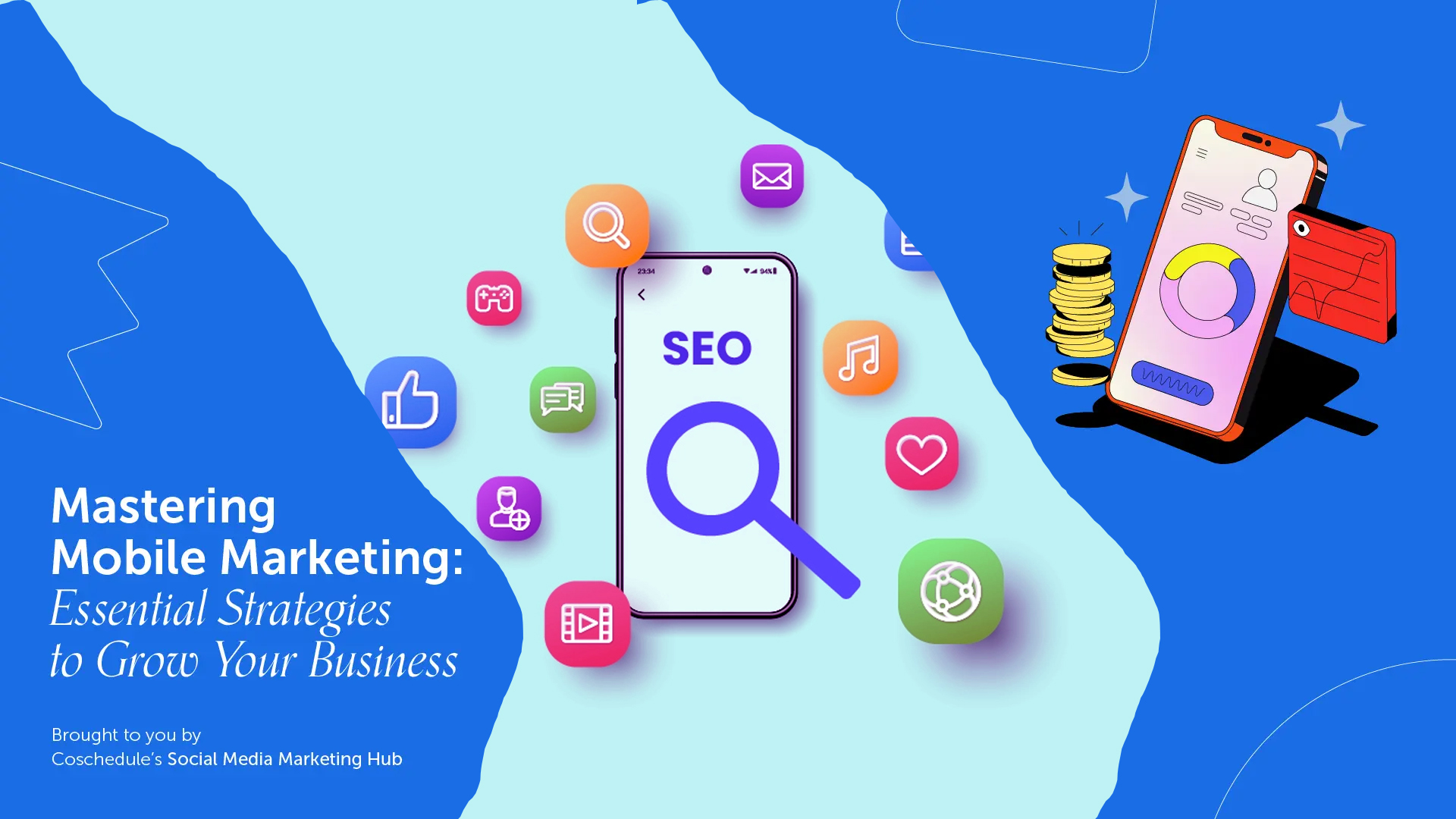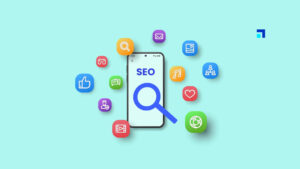Beyond the Build: Mastering App Marketing & Launch for Unstoppable Growth
You’ve poured your heart and soul into creating an incredible mobile app, a digital marvel designed to solve problems, entertain, or connect. But in the hyper-competitive app economy of 2025, simply building a great app is only half the battle. The other, equally crucial half, is App Marketing & Launch: the strategic art of getting your app discovered, downloaded, and cherished by your target audience.
Think of it this way: even the most exquisite product hidden in a warehouse won’t sell itself. Your app, no matter how brilliant, needs a spotlight, a megaphone, and a clear path to its users. A well-executed app marketing and launch strategy can be the difference between an app that languishes in obscurity and one that skyrockets to the top of the charts, generating consistent downloads, engagement, and revenue.
This comprehensive guide will take you through the entire journey of app marketing and launch, from pre-launch buzz to post-launch growth strategies. Whether you’re an indie developer, a lean startup, or a seasoned enterprise, understanding and implementing these tactics is paramount for your app’s success.
Why App Marketing & Launch Are Non-Negotiable
The mobile app market is oversaturated, with millions of apps competing for attention. Without a robust marketing and launch plan:
- Your App Becomes Invisible: It’s a needle in a haystack. Users won’t know it exists.
- Low Downloads & Engagement: Without discoverability, your potential user base remains untapped.
- Wasted Investment: All the time, effort, and money poured into development yield no return.
- Negative Feedback Loop: Lack of initial traction can lead to poor app store ratings, further hindering discoverability and trust.
- Missed Opportunities: Your app might be the perfect solution for someone, but if they can’t find it, the opportunity is lost.
The App Marketing & Launch Funnel: A Strategic Roadmap
Effective app marketing follows a structured funnel, guiding potential users from awareness to loyal engagement:
- Awareness: Making people aware your app exists.
- Consideration: Convincing them your app is a viable solution/entertainment option.
- Acquisition: Getting them to download your app.
- Activation: Getting them to complete the initial setup and experience the app’s core value.
- Retention: Keeping them engaged and coming back.
- Referral: Encouraging them to recommend your app to others.
- Revenue: Monetizing their usage (if applicable).
Phase 1: Pre-Launch – Building Anticipation & Audience
The marketing journey begins long before your app hits the app stores. Building anticipation and a pre-qualified audience is critical.
- Define Your Target Audience:
- Who are they? Demographics, psychographics, behaviors, motivations, pain points.
- Where do they hang out online? Which social media platforms, forums, blogs, or communities?
- What are their needs? How does your app specifically address these?
- Example: For a productivity app, target working professionals on LinkedIn and productivity-focused subreddits.
- Competitor Analysis:
- Who are your direct and indirect competitors?
- What are their strengths and weaknesses? (Features, UI/UX, pricing, marketing strategies, app store presence, reviews).
- What gaps can your app fill? How will you differentiate yourself?
- Craft Your Unique Value Proposition (UVP):
- What makes your app unique and indispensable?
- What core benefit does it offer that no one else does (or does better)?
- This UVP will be the cornerstone of all your marketing messages.
- Build a Pre-Launch Landing Page/Website:
- A simple, yet compelling web page detailing your app’s features, benefits, and screenshots/videos.
- Crucially, include an email signup form. This allows you to build an early subscriber list for updates and launch announcements.
- Integrate social sharing buttons.
- Start Content Marketing & Social Media Buzz:
- Blog Posts: Write articles related to the problems your app solves, positioning your app as the solution.
- Social Media: Create profiles on relevant platforms (e.g., Instagram for visual apps, X (formerly Twitter) for news, TikTok for short-form video, LinkedIn for B2B). Start sharing behind-the-scenes glimpses, feature sneak peeks, and engaging content related to your niche.
- Community Engagement: Participate in online forums, Reddit communities, and Facebook groups where your target audience congregates. Provide value, don’t just self-promote.
- Secure Media & Influencer Outreach:
- Identify relevant tech journalists, app reviewers, and industry influencers.
- Craft a compelling press kit: Include a well-written press release, high-resolution screenshots, app preview video, app icon, and a concise summary.
- Personalized outreach: Pitch your app with a clear story and explain its unique value. Offer early access (beta testing) to generate exclusive content.
- Beta Testing Program:
- Invite a select group of users (from your email list, community, or even friends/family) to test your app before launch.
- Use platforms like TestFlight (iOS) and Google Play Console’s internal/closed testing tracks.
- Gather valuable feedback for bug fixes and feature refinement.
- These early testers can become your first evangelists.
- App Store Optimization (ASO) Research (Pre-Launch):
- Begin intensive keyword research specific to your app’s function and target audience.
- Identify high-volume, low-competition keywords you can rank for.
- Start drafting your app name, subtitle/short description, and long description with these keywords in mind.
- Prepare your app icon, screenshots, and app preview video to be optimized for conversion.
Phase 2: The Launch – Making a Splash
Launch day is not just about hitting the “publish” button; it’s about orchestrating a surge of activity.
- Execute Your ASO Strategy:
- Ensure all app store listing elements (name, subtitle, descriptions, keywords, icon, screenshots, video) are fully optimized and compelling before submission.
- Remember the differences between iOS (App Name, Subtitle, Keyword Field, Promotional Text) and Android (App Name, Short Description, Long Description, Feature Graphic).
- Submit to App Stores (with care):
- Thoroughly review Apple’s App Store Review Guidelines and Google Play’s Developer Program Policies to avoid rejections.
- Ensure all necessary privacy policies, terms of service, and support contact information are in place.
- Submit your app several days to a week in advance, especially for iOS, as review times can vary.
- Simultaneous Marketing Blitz:
- Email Marketing: Send out a launch announcement to your pre-launch email list.
- Social Media Campaign: Announce the launch across all your social channels. Encourage sharing with a unique hashtag.
- Press Release Distribution: Distribute your finalized press release to your media contacts and press release services.
- Influencer/Media Follow-up: Remind influencers of your launch and encourage them to review/share the app.
- Paid User Acquisition (Optional but Recommended):
- Apple Search Ads (ASA): Target users directly searching for apps like yours on the App Store. Highly effective for direct installs.
- Google App Campaigns: Leverage Google’s network (Search, Play, YouTube, Display) to find relevant users.
- Social Media Ads: Target specific demographics and interests on platforms like Facebook, Instagram, TikTok, and LinkedIn.
- Influencer Marketing Campaigns: Collaborate with influencers for sponsored posts or reviews.
- Cross-Promotion: If you have other apps or products, cross-promote your new app.
- Website & Blog Update: Update your website with direct app store download links. Publish a launch announcement blog post.
- Community Engagement: Post about your launch in relevant online communities and forums.
- Monitor Early Performance:
- Immediately after launch, closely monitor downloads, crash rates, and initial user reviews.
- Use App Store Connect and Google Play Console for official analytics.
- Implement crash reporting tools (e.g., Firebase Crashlytics, Sentry) to identify and fix critical bugs swiftly.
Phase 3: Post-Launch – Sustaining Momentum & Growth
The launch is just the beginning. Long-term success hinges on continuous engagement and optimization.
- Monitor App Store Performance (Ongoing ASO):
- Keyword Tracking: Continuously monitor your keyword rankings. Adjust your ASO strategy based on performance.
- Competitor Monitoring: Keep an eye on competitor activities and app updates.
- Rating & Review Management: Actively respond to all reviews (positive and negative). Acknowledge feedback, address concerns, and thank users. Encourage satisfied users to leave reviews directly within the app (at appropriate moments).
- A/B Test Creative Assets (Google Play & Third-Party): Continuously test different icons, screenshots, and videos to improve conversion rates.
- In-App Engagement & Retention Strategies:
- Push Notifications: Use them judiciously and personalize them to re-engage users with relevant content, new features, or reminders. Avoid spamming.
- In-App Messaging: Provide contextual tips, onboarding guidance, or promote features directly within the app.
- User Onboarding: Ensure the first-time user experience is smooth, intuitive, and immediately demonstrates the app’s core value.
- Personalization: Tailor the app experience based on user preferences and behavior.
- Gamification: Incorporate badges, leaderboards, or progress tracking to encourage continued use.
- Regular Updates: Keep your app fresh with new features, bug fixes, and performance improvements. This shows users you’re actively developing and maintaining the app.
- Community Building & Support:
- Dedicated Support Channels: Offer responsive customer support via email, in-app chat, or a help center.
- Social Media Listening: Monitor social media for mentions of your app and engage with users.
- Build a Community: Create a dedicated forum, Discord server, or Facebook group where users can connect, share tips, and provide feedback.
- Continuous Paid User Acquisition:
- Iterate on your ad campaigns based on performance data (CPI, CPA, ROAS).
- Explore new channels and ad formats.
- Retarget users who abandoned onboarding or haven’t engaged recently.
- Email Marketing (Ongoing):
- Send newsletters with app updates, tips, and promotions.
- Segment your audience for targeted communication.
- Partnerships & Collaborations:
- Explore co-marketing opportunities with complementary apps or businesses.
- Participate in industry events, webinars, or podcasts.
- Monetization Optimization (If Applicable):
- A/B test different in-app purchase offers, ad placements, or subscription tiers.
- Analyze user behavior to optimize monetization funnels.
- Listen to User Feedback & Iterate:
- Regularly analyze reviews, support tickets, and direct feedback.
- Use this data to inform your development roadmap and prioritize new features or bug fixes. Show users that their feedback matters.
Measuring Success: Key App Marketing Metrics
Beyond downloads, track these metrics to gauge the health and growth of your app:
- Downloads/Installs: Total number of times your app has been downloaded.
- Active Users (DAU/MAU): Daily/Monthly Active Users – indicates engagement.
- Retention Rate: Percentage of users who return to your app after a certain period (e.g., Day 1, Day 7, Day 30). Crucial for long-term success.
- Churn Rate: Percentage of users who stop using your app.
- Conversion Rate (CVR): Percentage of app page views that convert into downloads. (Key ASO metric).
- Cost Per Install (CPI): Cost of acquiring a single install through paid advertising.
- Lifetime Value (LTV): The total revenue a single user is expected to generate over their lifetime using your app.
- Average Revenue Per User (ARPU): Average revenue generated per user over a specific period.
- Ratings & Reviews: Overall star rating and volume of reviews.
- Keyword Rankings: Position of your app for specific search terms.
- Crash-Free Sessions: Percentage of user sessions that don’t result in a crash.
- App Store Impressions: How many times your app listing was seen.
Conclusion
Launching an app is just the opening act. The real performance, the standing ovation, comes from a meticulously planned and passionately executed app marketing and launch strategy. In 2025, with an increasingly intelligent and discerning mobile audience, you cannot afford to leave your app’s fate to chance.
By dedicating resources to pre-launch buzz, optimizing for app store discoverability, making a strategic splash on launch day, and relentlessly focusing on post-launch user engagement and iteration, you can transform your app from a mere product into a thriving digital ecosystem. Remember, a great app is built, but a successful app is marketed, launched, and nurtured with unwavering commitment.




